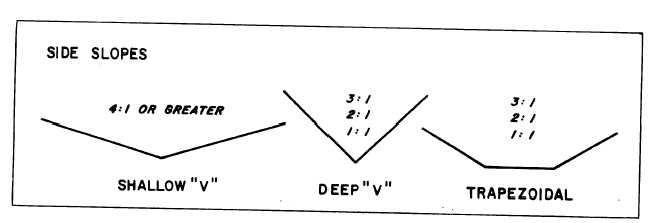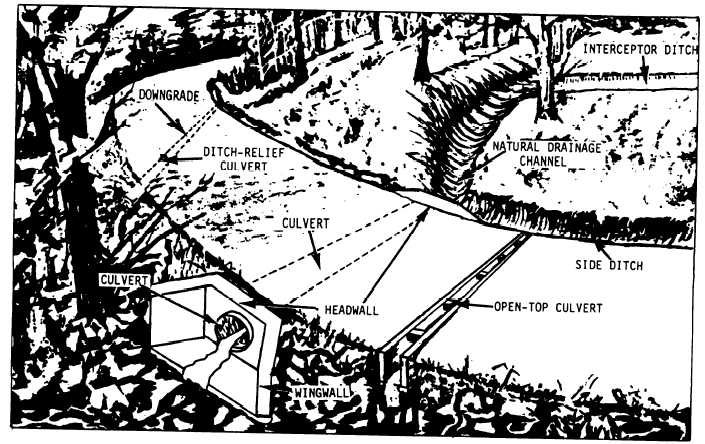Figure 3-11.—Types of ditches
Figure 3-12.—Drainage systems.
the bottom of the ditch to slow down the water. In
general, a moderate velocity is desirable because it
prevents excessive erosion and can offset the pending
effect of slower moving water.
One factor involving the volume of water that
cannot be controlled is the rainfall itself. The more
intense the rainfall and the longer the duration, the
greater the volume of water the ditch has to carry.
Talking to local residents and observing high-water
marks along streams are helpful to the engineer in
determining the heaviest rainfall to expect in a particular
area.
The engineer must consider not only the factors
involving the volume of water but also the design of the
ditch itself. Two common types of ditches are the
V-bottom and the flat bottom, or trapezoidal, ditch.
Examples of these ditches are shown in figure 3-11.
Under similar conditions, water flows faster in a
V-bottom ditch than in a trapezoidal ditch. The side
slope for a shallow V-bottom ditch is 4:1 or greater. For
3-12



